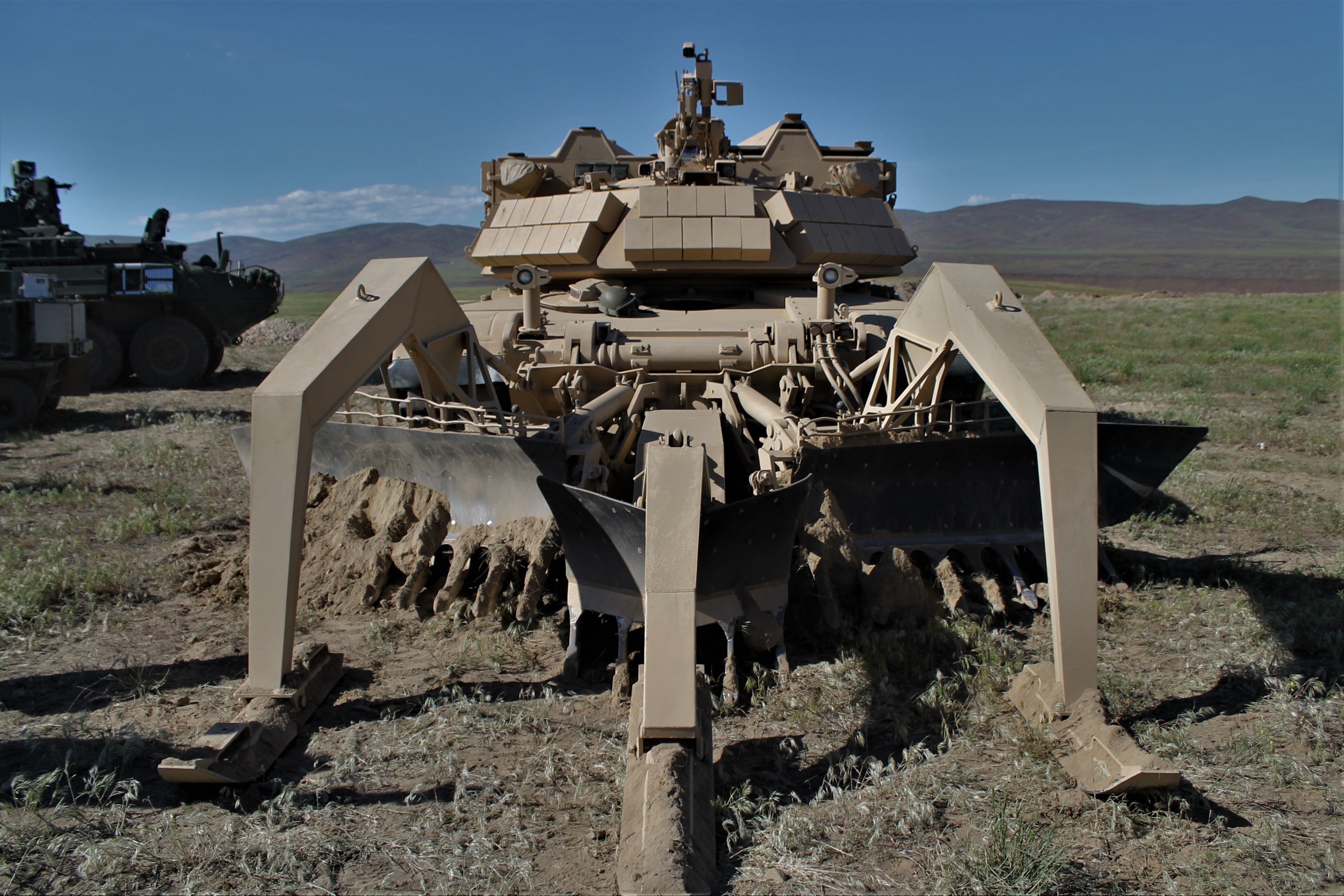WASHINGTON — The Army has renewed a competition to acquire a robotic mule for light infantry after it canceled its previous award following a protest.
The service posted a new Request for Proposals (RFP) on Feb. 14, allowing the four finalists in the original competition to recompete for a chance to build its Small Multipurpose Equipment Transport (SMET) ground robotic vehicle. (The original name for the program was the Squad Multipurpose Equipment Transport).
General Dynamics Land Systems’ Multi-Utility Tactical Transport, or MUTT, won the original contract to build SMET at the end of October 2019, but Textron, one of the other three companies to compete for the chance to build the system, filed a protest with the Government Accountability Office over the award.
In the protest, Textron claimed GDLS had been allowed to change its vehicle significantly following a soldier evaluation phase, which made the evaluation invalid even though an award was contingent on such an assessment from users.
Four companies were chosen from a larger pool in 2017 to compete to build the robotic vehicle: GDLS, a Textron offering from its subsidiary Howe & Howe, a team of Applied Research Associates and Polaris Defense, and HDT Expeditionary Systems. Each team built 20 platforms issued to infantry brigade combat teams for testing and analysis.
The Army terminated the program in December before the GAO made a ruling and said it planned to hold a new competition among only the four systems downselected as finalists in the previous competition.
RELATED

According to the RFP, those four companies will have a chance again to compete, under revised evaluation criteria.
The systems were originally assessed using four factors: soldier feedback, system reliability, system delivery and cost and price. The new evaluation will rely on two factors, the RFP notes, which are a “Phase III System Design” and cost and price.
“The driving rationale for the change in the criteria was based on consistent feedback from soldiers during mission exercises regarding the noise signature of the systems, specifically the generators and powertrain,” the RFP states. “Furthermore, payload and operation range in silent mode are essential characteristics of the system based on the intended use of the S-MET amongst Light Infantry and were also determined to be of great criticality.”
The RFP explains the system reliability factor was removed because of “a lack of recorded hours.”
The Army plans to award one 5-year Indefinite Delivery/Indefinite Quantity (IDIQ) production contract to buy both new and refurbished systems procured under the prototyping effort.
The award, according to the RFP, will come in May 2020 and systems will be delivered through October 2024, with all vehicles fielded by the following October.
The service’s target price per system is $112,000 with a maximum ceiling for the contract set at $249 million, according to the RFP.
GDLS’ initial contract totaled $162.4 million to produce 624 vehicles with the contract wrapping up in October 2024. Delivery was to begin in the second quarter of fiscal 2021.
The Army has been working through the acquisition of a vehicle that can carry about 1,000 pounds worth of soldier equipment for many years. The goal is to lighten the load of nine soldiers across an infantry squad. The Army wanted the robots to be able to travel 60 miles over three days and to be able to provide a spare kilowatt hour of power while moving and at least 3 kilowatt hours while stationary.
Jen Judson is an award-winning journalist covering land warfare for Defense News. She has also worked for Politico and Inside Defense. She holds a Master of Science degree in journalism from Boston University and a Bachelor of Arts degree from Kenyon College.







